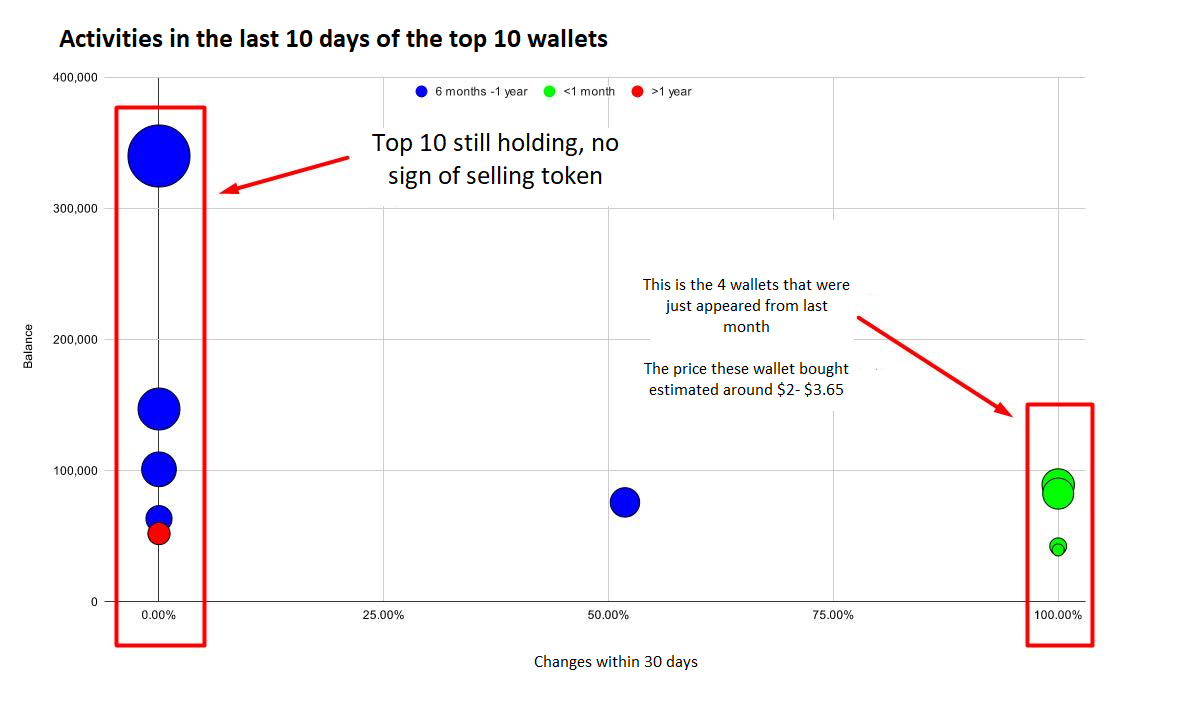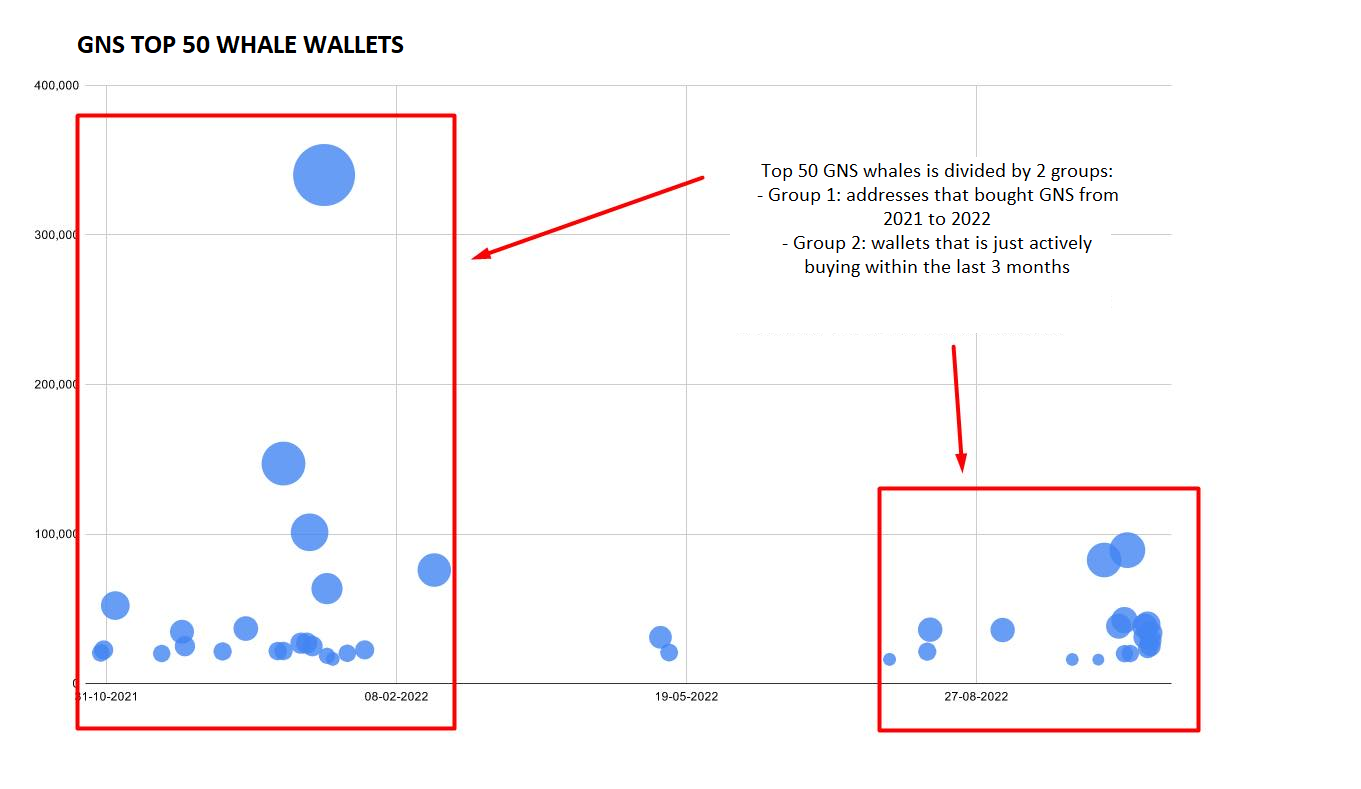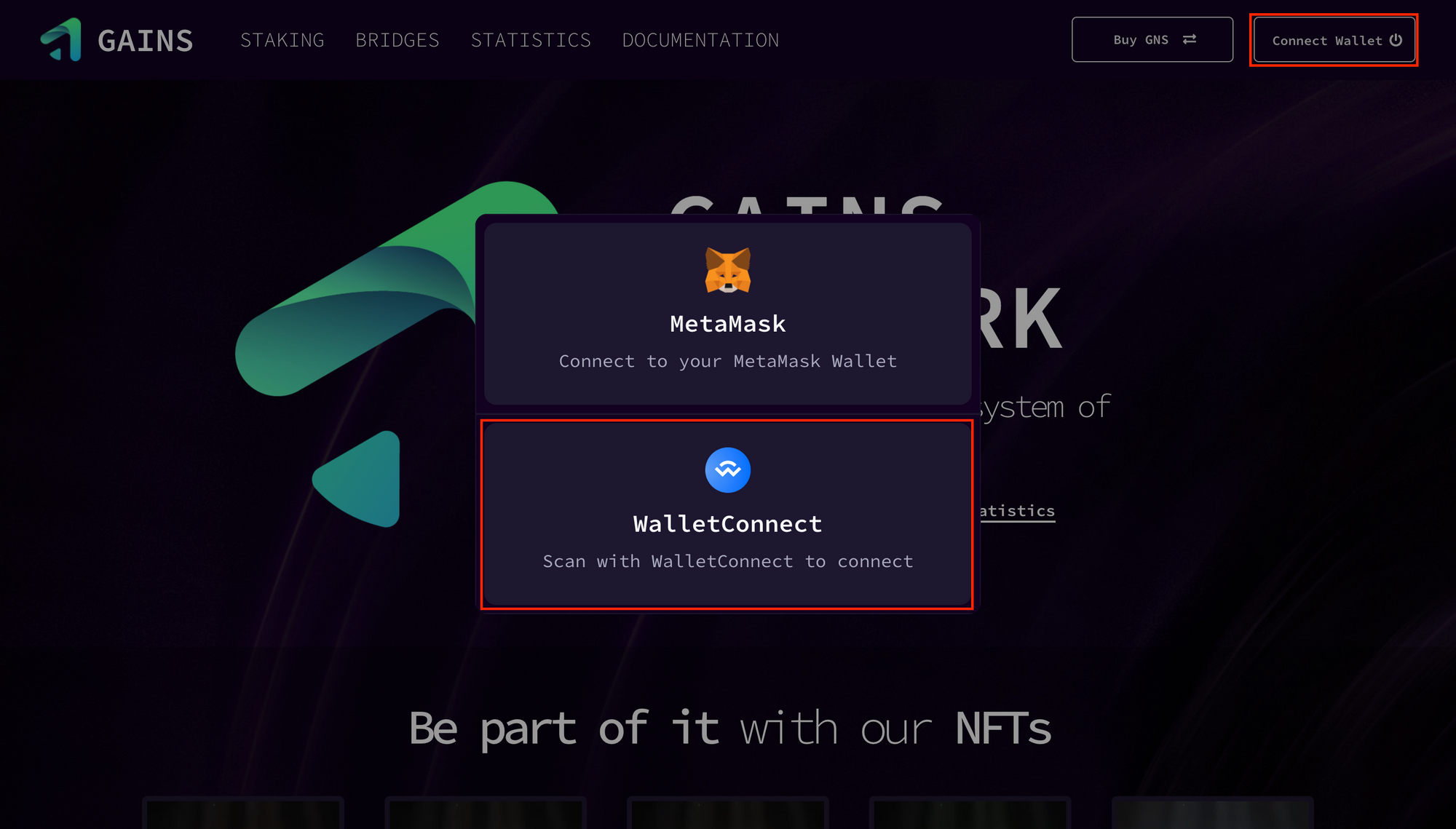In the past 1 month, Gains Network - DeFi trading platform - has performed very well against the general crypto market scene as revenue has continuously grown steadily. Not only that, the daily trading volume of native token $GNS has at times surpassed $GMX - the top trading platform token on Arbitrum at the moment. What created such a strong wave? Let's find out with Holdstation through Gains Network analysis!
Gains Network
gTrade
Built on the Polygon ecosystem, Gains Network with its key product is a decentralized perpetual trading exchange that applies a unique liquidity mechanism based on synthetic assets - leverage is aggregated and secured by DAI vault, GNS/DAI liquidity pair and GNS token.
Currently, gTrade supports:
- 39 crypto trading pairs (4 - 150x leverage)
- 22 stock trading pairs (3 - 30x leverage)
- 10 FOREX trading pairs (10 - 1000x leverage)
⇒ Compared to some projects in the same field as GMX, the number of trading pairs GNS supports is quite high. Besides, the combination of traditional financial market and crypto helps diversify the customer base.
One advantage of gTrade is its ability to update trading pair prices in real time multiple times per second. Instead of using the standard Chainlink Oracle - which updates information once every few minutes, Gains Network partnered with Chainlink to deploy DON (Decentralized oracle network). Every time a trader creates an order, Gains Network sends a request to 8 nodes that collect prices from the APIs of 9 different exchanges and display the median price on the platform ⇒ reducing the actual value difference, traders can get better profit.
The business model and liquidity mechanism of Gains Network
There are currently three staking options on Gains Network with profits generated from real revenue - project transaction costs.
- DAI Vault
This is the source of liquidity for the platform. DAI vault will receive DAI from traders with negative PnL (Profit and Loss) and also pay out DAI profits for positive PnL traders.
For example, a trader with a loss of $1000 ⇒ $1000 DAI is added to the vault. Others profit $200 ⇒ $200 DAI extracted from vault.
In addition, users can also stake DAI to provide liquidity and enjoy sharing fees from platform revenue, currently, the APY level is around 14%. DAI staker is not at risk from Impermanent Loss, instead, if the net PnL value is positive (the amount of DAI paid out on a profitable trade is greater than the DAI earned from a losing trade) then the vault will be under collateralized and users lose part of their DAI.
Up to now, PnL Gains Network is around $-4 million ⇒ Stakers are still profitable.

The amount of staked DAI can only withdraw up to 25% of the maximum amount of DAI users are holding every 24 hours. If you stake 1000 DAI, you can withdraw 250 DAI/24h and withdraw in 4 days.
Vault TVL = Amount of DAI deposited by users
Vault balance = Vault TVL + net PnL
Vault collateralisation = Vault balance / Vault TVL

Currently, the collateral rate is about 107%. The more loss traders trade, the higher the collateral ratio and if it exceeds 130%, the excess DAI will be used to buy and burn $GNS tokens.
⇒ In general, PnL has a negative trend, so DAI staker is guaranteed profit. A better scenario of going over 130% would increase the value of $GNS tokens.
- GNS Staking
40% market order fee and 15% limit order fee will be allocated to GNS Staking. Users can stake $GNS to receive fees in the form of DAI from trading activity on gTrade. The current APY level is 5%.

Of more than 3,000 GNS staking wallets, there are: 13 are GNS millionaire, 102 are medium whales (GNS balance from 100K USD - under 1 million USD). The rest are mainly retailers (2,977 wallets) accounting for 97% of 3,000 wallets.
Regarding the allocation of staked GNS in the pool:
- Although the number of millionaire whale wallets is only 13, they account for an allocation of 43% in the pool. An average wallet holds 3 million USD tokens.
- Next are medium whales with 40%, and retailers with only 16.5% of the tokens in the pool.

- GNS/DAI Pool
Users can get GNS and dQUICK rewards by staking LPs on Quickswap. Rewards are deducted from transaction fees - the real source of revenue and do not have to mint any other tokens.
GNS NFT
A unique feature of GNS comes from the project's NFT - GFARM2. The rarity and premiums that this NFT brings are hierarchical by rank: bronze, silver, gold, platinum, and diamond. GNS's NFT plays an important role for the project ecosystem and users if they want to stick with the project for a long time.
Some benefits that GFARM2 brings to holders:
- Reduce the price difference between demand and supply prices (Bid and Ask).
- Allows running bots to receive profits from liquidity and limit orders automatically. NFTs of all levels can use this function.
- Increase interest from liquidity provider and staking by staking NFT, the total number of NFTs that can be staked simultaneously is up to 3 NFTs.
How GFARM2's boosting mechanism works
GFARM2 helps increase interest by providing liquidity or single-sided staking
- Without NFT, APR (or APY if interest is compounded daily) shows up in the staking section will be the average APR received by the user based on the previous week's interest.
- With NFT, users can get a higher return with the same amount of capital. The maximum number of NFTs that can be staked is 3, so if a user stake 1 Diamond GFARM2, 1 Platinum GFARM2, and 1 silver GFARM2, the total interest increase will equal to the total interest rate of 3 NFTs (13 + 8 + 3 = 24%). So that person will receive an additional 24% of the APR.
GFARM2 NFT Marketplace
Total supply of 1500 NFTs; however, on the project's official OpenSea account, only around 1% of GFARM2 is currently listed (about 16-17 NFTs). This means that the collection’s use case is attractive enough for users to exploit them instead of selling, or simply the current floor price has not been clearly determined because there could be many use cases that have not been announced by Gain Network yet.
In whatever cases, it can be affirmed that these NFTs play a big role for the users as well as the health of the project. Most of the minted are kept for use, further confirming the growth of the project value and GFARM2 itself in the future.
On-chain Data By The Datafi Vietnam
General
Currently, the total supply of GNS is 29,025,204 $GNS and is 100% unlocked in the market.
⇒ There is no selling pressure from unlocking tokens like other projects because GNS circulation has reached 100% of the total supply.
CEX/ smart contract: 25,135,264 $GNS (87% total supply) ⇒ Most of it is in the staking smart contract of GNS (77%), on Quickswap DEX (4.23%). The main trading volume of GNS is currently also on DEX, namely Quickswap (accounting for 80% of daily volume). The range bar on Quickswap is currently only ~4 million USD.
So who has been trading GNS on DEX in the last 24 days? Datafi's statistics show that:

The 69 most significant transactions at the time of writing mainly come from 8 addresses. In general, there has been still selling pressure from DEX traders in the last 24 hours. The current selling volume is 210,456 GNS, while buying is only 138,018 GNS.
Out of 69 transactions, there were only two net buy orders from 2 wallets labeled Elite Dex Trader and Heavy Dex trader, with a volume of around 66,000 USD.
Whale tracking
Personal wallets
Accounted for around 13% of the circulating supply. In which, the top 10 whale wallets are holding 1,033,834 GNS, equivalent to 3 million USD. Accounted for 3.57% of the total supply.
In particular, take a look at some transactions in the last 7 days from a whale wallet 0x69c- labeled as "mewtwoo": on OpenSea, the wallet has unstaked more than 515,000 GNS (equivalent to 1.8 million USD). After that, the wallet sold 210,000 GNS (equivalent to 700,000 USD) and then staked back 192,000 GNS.
What is worth noting is that this wallet gathered at least 200,000 GNS token from May to July, with prices ranging from $0.59 - $0.85. The estimated wallet balance of this wallet is approximately X5. This wallet then stakes more than 300,000 GNS.
Currently, “Mewtwoo” has no significant signs of collecting or selling. If there is anything new from this wallet, DataFi will update in the next posts.
Take a closer look at the top 10 whales wallets of GNS

- There are a large number of top whales wallets with a small wallet age (under 1 year), especially 4 wallets that have only appeared for less than 1 month. This is quite different from tracked DataFi projects, which often don't have top wallets under 1 month old.
- All 10 wallets in the last 30 days either hold, or getting more token.
Top 50 wallets

Notably, Datafi found that there are 43 wallets that are personal wallets, including 2 groups.
- Around 28 wallets with a relatively long life (more than 1 year ago) are currently holding 1,161,148 GNS (equivalent to 3 million USD). .
- 13 wallets are around 1 month old. This is clearly a sign of buying by mid-term traders. They are currently holding 505,452 GNS which accounts for 1.76% of the total supply. Out of 505,452 GNS of this group, more than 60% (321,207 GNS) were purchased in the last 7 days, an estimated price range of about $3.20. Until now, these wallets have averaged profits of 10%-20%.
Conclusion
- Currently, GNS liquidity is mainly concentrated in DEX, however, the largest GNS exchange, Quickswap, only has a balance of 4 million USD now.
- The main supply is held in the GNS staking contract, and in the top 50 individual wallets. PLEASE NOTE, due to the nature of the GNS project - NOT LOCKING TOKEN in their staking contract, there could be selling pressure if the staking whales in the contract release tokens. Regarding this, DataFi will update you as soon as possible.
- There are signs of speculative money flow appearing in the last 2 weeks. The activity of the top 10 whales is either holding or buying more, which is also a good sign for the short term price.
You can also connect Holdstation wallet and use the platform quickly through WalletConnect
Connect from Holdstation Wallet to the platform via WalletConnect
Step 1: Select "Connect Wallet", and select WalletConnect, the platform will give you a QR code

Step 2: Open the Holdstation wallet application on your phone and select the QR code scanning feature in the corner of the screen, then scan the QR code provided by WalletConnect
Step 3: Select "Connect", wait a moment for the system to confirm and you have successfully connected the wallet to the platform.

How to buy $GNS tokens on Holdstation wallet
Currently, the Holdstation wallet supports the Polygon network and anyone can make $GNS transactions directly on the Holdstation wallet quickly and securely.
Step 1: Switch to Polygon network.
Step 2: Click the + symbol in the token section and enter the verified GNS token.
Step 3: Click on the GNS token on the displayed list and select "Swap".

Step 4: Select the token you want to swap to $GNS
Step 5: Enter the amount you want to swap and proceed with the swap. It is done!

Download Holdstation wallet HERE (Currently Beta Testing version is only available for iOS, please download TEST FLIGHT first. Holdstation wallet will be available on Android soon).
Disclaimer:
The information, statements and conjecture contained in this article, including opinions expressed, are based on information sources that Holdstation believes those are reliable. The opinions expressed in this article are personal opinions expressed after careful consideration and based on the best information we have at the writing's time. This article is not and should not be explained as an offer or solicitation to buy/sell any tokens/NFTs.
Holdstation is not responsible for any direct or indirect damages arising from the use of this article content.




